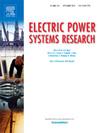Enhancing peak electricity demand forecasting for commercial buildings using novel LSTM loss functions
IF 3.3
3区 工程技术
Q2 ENGINEERING, ELECTRICAL & ELECTRONIC
引用次数: 0
Abstract
The increasing integration of variable renewable energy necessitates new measures for grid balancing and cost optimization. Consumers can contribute through demand response, provided accurate predictions, particularly during peak periods. This study aims to enhance electricity demand forecasting using a Long Short-Term Memory (LSTM) neural network with two novel loss functions: Weighted Mean Squared Error (WMSE) and Negative Log Likelihood (NLL). WMSE emphasizes high-demand periods, while NLL captures prediction uncertainty. The model, trained on two years of hourly data for Oslo Airport Gardermoen (Norway), incorporates temporal features, historical demand, passenger numbers, and outdoor air temperature. Optimal model architecture is determined through grid search and cross-validation. Results reveal that top-performing model configurations have minimal architecture, suggesting that a simple model is sufficient for capturing temporal and seasonal demand variations. Models trained with WMSE and NLL demonstrate reliable peak predictions and valuable uncertainty estimations, with the top performing model achieving a Mean Absolute Percentage Error (MAPE) of 5.54 ± 1.00 %. Visual inspections confirm reproducible daily demand patterns, including characteristic dual peaks and weekday-weekend distinctions. This research demonstrates that LSTM models are effective and easy to use for electricity demand forecasts, empowering consumers in making informed decisions about flexibility management and demand response strategies.
利用新型 LSTM 损失函数加强商业建筑高峰电力需求预测
可变可再生能源的日益整合需要新的电网平衡和成本优化措施。消费者可以通过需求响应做出贡献,提供准确的预测,特别是在高峰时期。本研究旨在利用具有加权均方误差(WMSE)和负对数似然(NLL)两种新型损失函数的长短期记忆(LSTM)神经网络增强电力需求预测。WMSE强调高需求期,而NLL则捕捉预测的不确定性。该模型是根据挪威奥斯陆机场加德莫恩(Oslo Airport Gardermoen)两年来的每小时数据进行训练的,它结合了时间特征、历史需求、乘客数量和室外气温。通过网格搜索和交叉验证确定最优模型体系结构。结果显示,表现最好的模型配置具有最小的架构,这表明一个简单的模型足以捕获时间和季节性需求变化。用WMSE和NLL训练的模型显示出可靠的峰值预测和有价值的不确定性估计,表现最好的模型实现了5.54±1.00 %的平均绝对百分比误差(MAPE)。目视检查确认可重复的日常需求模式,包括特征双峰和工作日-周末的区别。这项研究表明,LSTM模型在电力需求预测方面是有效且易于使用的,使消费者能够在灵活性管理和需求响应策略方面做出明智的决策。
本文章由计算机程序翻译,如有差异,请以英文原文为准。
求助全文
约1分钟内获得全文
求助全文
来源期刊

Electric Power Systems Research
工程技术-工程:电子与电气
CiteScore
7.50
自引率
17.90%
发文量
963
审稿时长
3.8 months
期刊介绍:
Electric Power Systems Research is an international medium for the publication of original papers concerned with the generation, transmission, distribution and utilization of electrical energy. The journal aims at presenting important results of work in this field, whether in the form of applied research, development of new procedures or components, orginal application of existing knowledge or new designapproaches. The scope of Electric Power Systems Research is broad, encompassing all aspects of electric power systems. The following list of topics is not intended to be exhaustive, but rather to indicate topics that fall within the journal purview.
• Generation techniques ranging from advances in conventional electromechanical methods, through nuclear power generation, to renewable energy generation.
• Transmission, spanning the broad area from UHV (ac and dc) to network operation and protection, line routing and design.
• Substation work: equipment design, protection and control systems.
• Distribution techniques, equipment development, and smart grids.
• The utilization area from energy efficiency to distributed load levelling techniques.
• Systems studies including control techniques, planning, optimization methods, stability, security assessment and insulation coordination.
 求助内容:
求助内容: 应助结果提醒方式:
应助结果提醒方式:


